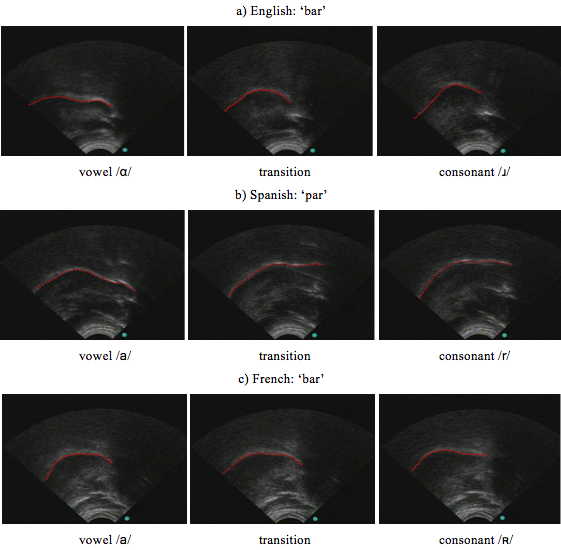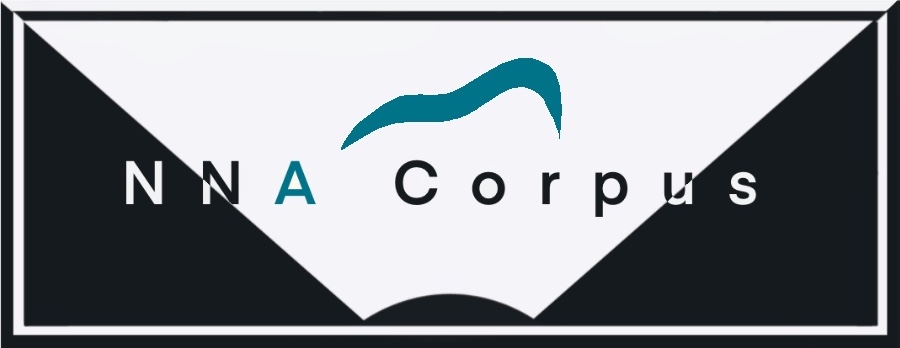Goals and Objectives
The goal of the NNA Corpus is to provide audio and ultrasound video recordings as a free resource to the linguistics research community at large for the investigation of the acoustic and articulatory properties of L2 speech. Our long-term goal is to acquire and share speech data for several foreign languages commonly taught in the US (e.g., Arabic, German, Spanish Chinese, Korean, etc.) Out of convenience, we selected French as our first language (NNA French).
A similar speech corpus has previously been established for the English language and is currently available online as The Speech Accent Archive (Weinberger and Kunath, 2011). This corpus, including audio recordings and phonetic transcriptions of English produced by adult learners of English from various language backgrounds, has benefitted researchers in theoretical and applied linguistics as well as teachers of English. This web-accessible corpus of non-native English speech presents a unique and valuable research tool for those who want to understand the characteristics of English speech produced by non-native speakers from various backgrounds.
The current project is modeled on The Speech Accent Archive, aiming to provide the other side of the picture: What are the characteristics of the foreign language speech produced by native speakers of American English who learn an additional language? As more and more American students are learning an additional language, we expect more research to be conducted in foreign language pedagogy to speakers of English. The NNA Corpus will serve as a "typological corpus" of foreign language produced by American English speakers.
While the proposed project emulates the methodology of The Speech Accent Archive to acquire audio recordings, it further provides ultrasound recordings of tongue movements simultaneously collected during speech. Research in theoretical phonetics has been highlighting the importance of articulation, rather than acoustics, in human speech perception and production (e.g., Fowler, 1996). This theoretical endeavor has recently been extended to language pedagogy, and it has been claimed that visual information of articulatory movements (i.e., seeing what happens inside the speaker's mouth while speaking) facilitates the learning of foreign language speech (e.g., Wu et al. 2016). The corpus, including the articulatory information, will allow further analyses of phonetic properties of nonnative speech when acoustic information alone is not sufficient.

Theoretical Background
Learning an additional language (L2) can be very challenging, although extremely rewarding, especially for adult learners. This is true in almost every aspect of the language, but the difficulty in pronunciation is peculiar: adult learners are more likely than younger learners to retain a foreign accent, as shown by many research studies (e.g., Baker & Trofimovich, 2005; Flege 2007, 2009, among others). Foreign accents can be attributed to manifold sources, but one important source is that languages have different sound systems. This makes the learners encounter sound contrasts that do not exist in their native language (L1) when learning an additional language. French, for instance, has the nasal vowels /ɑ̃, õ, ɛ̃/, as in banc “bench,” bon “good,” and bain “bath”, respectively. As these vowels do not occur in English, native speakers of English who learn French past adolescence or during adulthood often have difficulty producing them, resulting in discernable foreign accents in the target language (see Flege’s (1995) Speech Learning Model).
Nonnative production of adult learners may not be similar to those of the native speakers of the target language. Nonetheless, the phonetic properties involved in the learners’ productions are not equivalent to those of their native language. In other words, adult learners often resort to certain strategies to approximate the target sound instead of exploiting the phonetic repertoire of their native language. In the case of the aforementioned French nasal vowels, for example, Paradis and Prunet (2000) found that English native speakers often produce them as oral vowels followed by a nasal consonant (e.g. /n/). This way, the learners can achieve the vowel nasalization by regressive assimilation, a strategy the authors refer to as unpacking. The corpus of French nonnative speech production (NNA French) presents research opportunities to examine other potential strategies used by learners of French, not only for the acquisition of the nasal vowels, but also for the acquisition of other French sounds that may be particularly difficult for native speakers of American English. Research-based on the NNA French corpus will help better define what constitutes a foreign accent in French speech produced by native speakers of American English. It will furthermore provide a comprehensive account of how French phonology is acquired in foreign language classes, which is expected to benefit foreign language instructors to develop teaching methods in French pronunciation and to provide adequate corrective feedback to their students.

